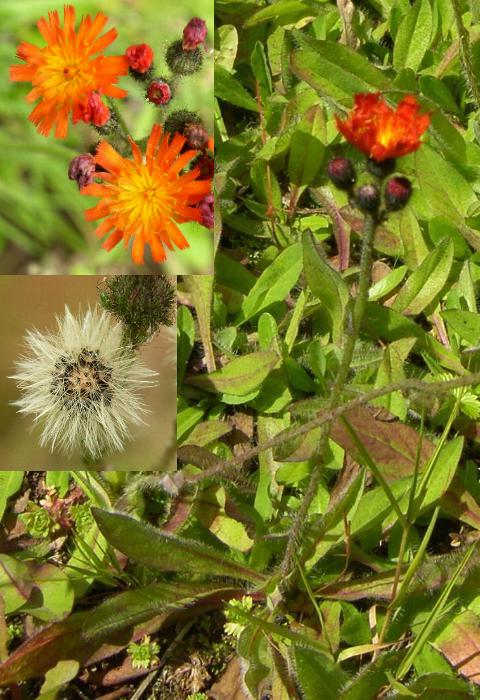Fox-and-cubsScientific Name: Pilosella aurantiaca syn. Hieracium aurantiacum |
A perennial which grows as a basal rosette for most of the year, spreading by stolons and seed.This is a native of alpine regions in central and southern Europe, brought to the British Isles in the 17th century as a remedy for poor eyesight - the belief was that the hawk used it to give it its acute eyesight, hence the derivation of the scientific name from 'hierax' the Greek for hawk. All parts of the plant exude a milky sap.
The leaves are lanceolate with rounded ends which are covered with short, stiff hairs. During the flowering period from May to September, erect, usually leafless stalks develop, which are about 30cm high and covered in black hairs.
The bright orange flowers are borne in clusters and this gave rise to the name Fox-and-cubs when the first flower to open is larger than the surrounding opening buds. They have the square, frilly end to their petals similar to Hawkbits, and Dandelions. After pollination the flowers close up to develop the seeds and fluffy carriers which take the seed to new areas, although most fall near to the parent plant.
It is sometimes grown as an ornamental because of the attractive flowers, but it can be very invasive due to the creeping stems and wind-blown seed. It can be a lawn weed because the basal rosette is below the sweep of mower blades. Remove any fading blooms before the seed develop. The plants are easily uprooted and the fibrous roots do not regrow provided the crown is removed.
For chemical control a systemic herbicide like Glyphosate is best. Pull off any flowers as they can mature and produce seed before the chemical can act. In the lawn a selective weedkiller should work, or use Gylphosate as a spot weeder.
